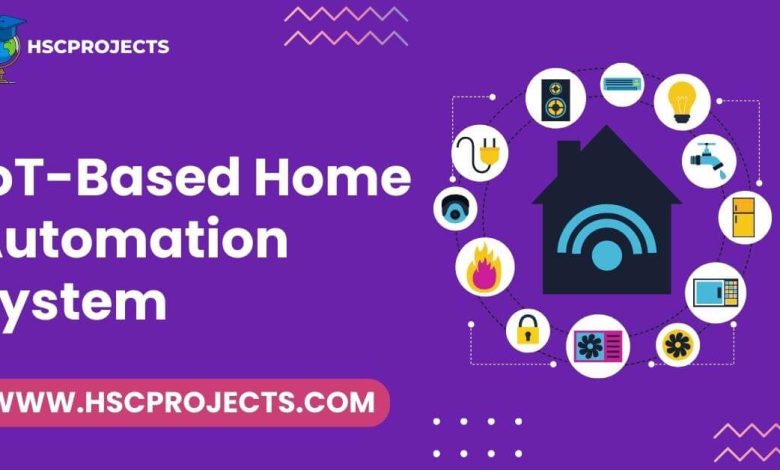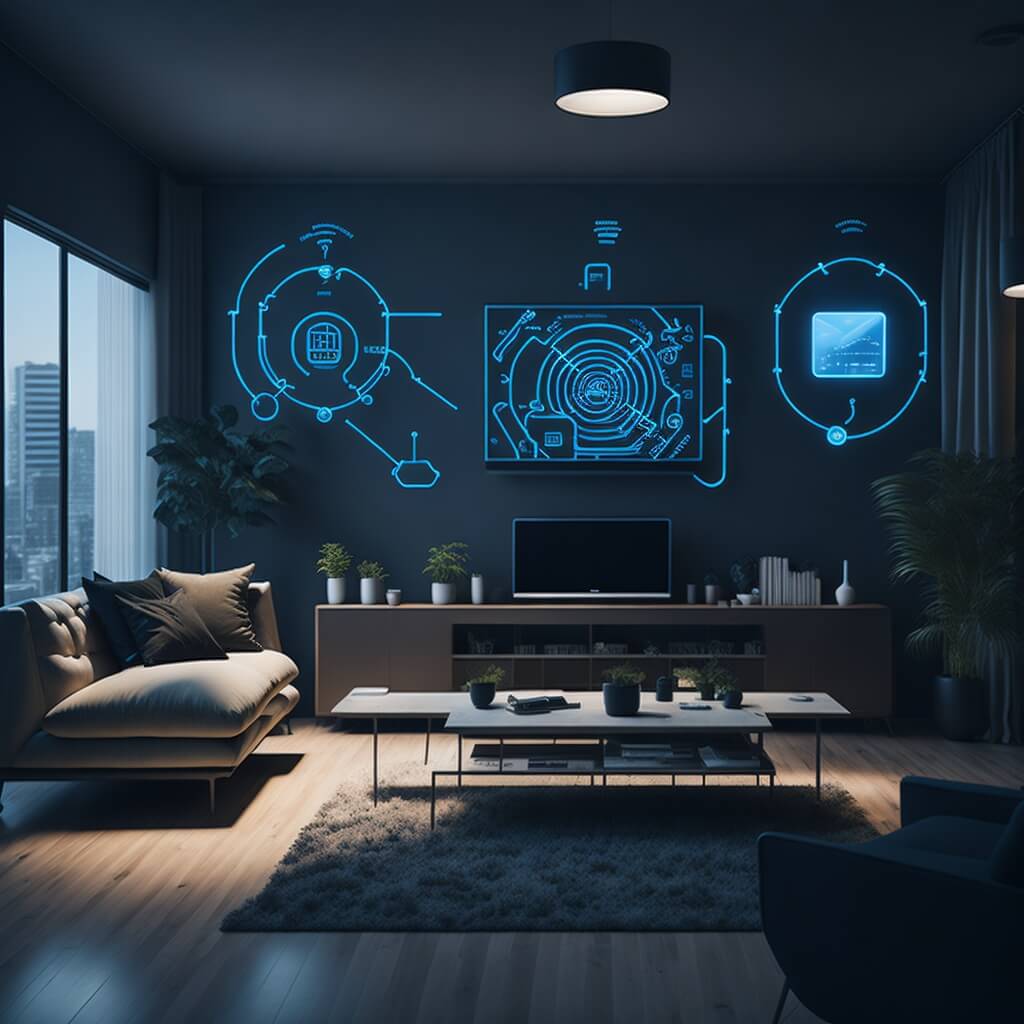
IoT-Based Home Automation System
The Dawn of Smart Homes
The Internet of Things (IoT) is not just a buzzword; it’s a technological revolution that’s reshaping our daily lives. One of the most impactful applications of IoT is in the realm of home automation. Imagine controlling your home appliances, from lighting to fans, remotely through the internet. This is the promise and reality of IoT-based home automation.

How Does IoT Home Automation Work?
At the core of this system is the integration of hardware devices with internet connectivity. These devices, when connected to home appliances, allow for remote control and automation. For instance, with the touch of a button on your smartphone, you can adjust the lighting in your living room or turn on the fan in your bedroom, even if you’re miles away.
The system’s architecture is built around an AVR family microcontroller, which acts as the brain of the operation. This microcontroller interfaces with an ESP8266 WiFi module, facilitating communication over the internet. The status of the system, such as which appliances are currently active, is displayed on an LCD screen for easy monitoring.
Relays, which are electrically operated switches, play a crucial role in this setup. They enable the microcontroller to switch household appliances on or off. The entire setup is powered by a 12V transformer, ensuring a steady supply of power.
Key Components of the IoT Home Automation System:
- Atmega Microcontroller: The central processing unit that interprets and executes commands.
- ESP8266 WiFi Module: Enables the system to connect to the internet and receive commands.
- LCD Display: Provides real-time feedback and system status.
- Relays and Relay Driver IC: Facilitates the switching of home appliances.
- Power Components: Including the transformer, voltage regulator IC, and other essential components to ensure a stable power supply.
- User Interface Elements: Such as push buttons and switches, allowing for manual control when needed.
Software Integration:
The hardware components are just one side of the coin. On the software front, the system utilizes the Arduino Compiler, with the microcontroller programmed in the C language. Additionally, IOTGecko, a platform for IoT solutions, is employed to facilitate seamless internet connectivity and control.
Conclusion:
IoT-based home automation is not a glimpse into the future; it’s the present. As technology continues to evolve, the line between our digital lives and physical spaces will blur, leading to homes that are not just structures but intelligent entities. Whether you’re looking to enhance convenience, increase energy efficiency, or simply embrace the latest tech trends, IoT home automation is the way forward.
In order to download the PDF, You must follow on Youtube. Once done, Click on Submit
Follow On YoutubeSubscribed? Click on Confirm
Download IoT-Based Home Automation System PDF






